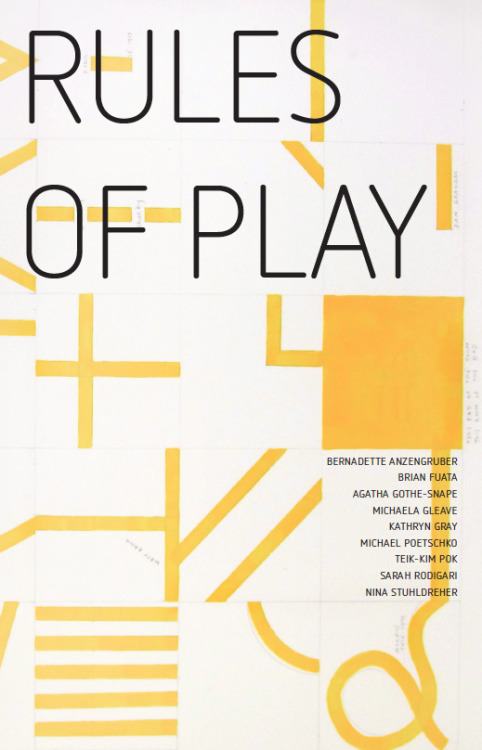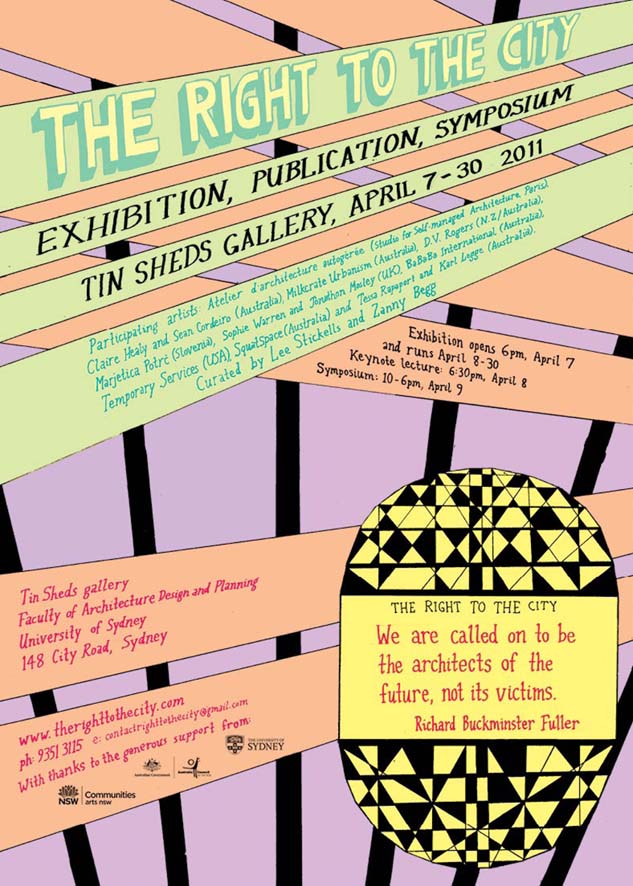Remembering Ahead (Or How I Never Learnt to Play Bridge)
[First published as catalogue text in Kathryn Gray (ed.) Rules of Play, Tin Sheds Gallery, Sydney 2011]
o

o
North: so spades is always the highest, isn’t it?
South: no that’s only in the bidding
West: you’ll learn by playing, you will.
North: let’s just have a crack
East: that’s not a bridge term
♥ ♠
West: Now, as I understand it, I could start modestly, because that seems to be the way … it’s a modest game
Orchestrating an impromptu game of bridge between artists, overworked and time-poor, and all but one of whom have never played before, may not at first seem the most expedient way of advancing a catalogue text for an imminent exhibition featuring said artists. Nonetheless, an unlikely proposition born of delirium and misadventure has somehow become a concrete actuality, and here we are on a Saturday night, clumsily acquainting ourselves with the rules of a rather old-fashioned game that originated in nineteenth century Russian ‘biritch’ and whose modern form was popularised throughout Europe from the late 1920s. A game of skill and chance described as ‘tactical, with inbuilt randomness, imperfect knowledge and restricted communication’,1 which also happens to be a neat characterisation both of Rules of Play as a curatorial event and of the individual artist projects it brings into being.
South: It’s always good to lead with your heart
We have at our disposal a digital copy of Learn Bridge in One Hour, 2 some hastily prepared soup and one player’s recollections of heavily bastardised high school matches. Seated as instructed around a square(ish) table in the cosy surrounds of the Bill + George Librarium, we also have a set of starting parameters that curator Kathryn Gray offered all the artists, Australian and Austrian, for the exhibition’s first iteration at Bell Street Project Space in Vienna late last year. Her directives to ‘identify all specificities and objectives’, ‘make sure that everyone understands’, ‘do everything required’, ‘feel the affect’, ‘remember what came before’ and ‘repeat more than necessary’ seem oddly appropriate at this juncture, working as we are in teams (North-South, East-West) to negotiate unfamiliar terrain where memory, commitment and shared learning have a high exchange value. Also, as we are all on stolen time in this nebulous work/play zone, we might as well enjoy it.
South: This is a total novice round, this is fine. We’re fumbling our way through it, and some order will emerge
The person who has brought us here, albeit unwittingly, is my great aunt Dora, a champion bridge player until the day she died aged almost ninety-eight, just over a week ago. The game was serious and a touch mystical for this extraordinary woman who spoke seven languages and studied Medicine in Paris, Jews being unable to attend Polish universities. It was at the bridge table that her husband Oskar (a ballroom-dancer from a family of wealthy Russian industrialists) had managed to acquire another player’s unneeded identity papers which, with a little forgery, would enable their passage away from the glinting opulence and terror of 1930s Warsaw and later Vilnius, to this faraway place that would become their home. 3 Over the years we’d often talked about her teaching me to play, but time, as it has a habit of doing, slipped away.
East: Bold move there, South!
To add to its improbability, our game has followed directly on the heels of an erudite three-hour ‘rave’ by legendary Indigenous historian and activist Gary Foley, in the very gallery where Rules of Play will take place. Foley opened with a quote, ‘the past actually happened but history is only what someone wrote down’ and indeed his own lived memory is one painfully elided by official histories. 4 To remember what came before is no straightforward act of recall but a generative exercise in (re)construction. There is resonance here with the words of Hans-Georg Gadamer, as cited by design philosopher Tony Fry in Design as Politics: ‘memory must be formed … One has memory for some things and not for others’. 5 To this basic formulation Fry adds, ‘there is no Sustainment without memory’, arguing that ‘in the bleakness of ‘the structurally unsustainable present’ it is crucial to develop ‘another way’ and to defend a memory of an otherwise’. 6 This puts remembering – of a particular ‘otherwise’ kind – at the forefront of future-making; and learning how to do it will require imagination and new value judgements, tactical skill and a recognition of the limits of one’s own knowledge.
South: so that means, we’re projecting into the future, and going, I’m confident, especially when you call out Spades, of having the highest cards.
The online introduction to Rules of Play notes that though establishing frameworks in the present, these artists reach out in a double motion ‘back to what has already happened’ and ‘towards a speculative reimagining of what may yet be possible’. 7 Appropriating past practices and reformulating them into new, futuring forms represents a kind of ‘otherwise memory’ that can be found in the work of several artists in this show. For Sarah Rodigari, in Strategies for Leaving and Arriving Home (2011), walking a distance travelled hundreds of times by plane without thinking forced the artist to consider quite literally what she is capable of. Enacting with cheerful unpreparedness the romantic pilgrim of Walden-like hikes through high and low country (but also the manifest experience of those fleeing persecution or unrest, and indeed of anyone needing to cross country before, or perhaps after, the epoch of cars), Rodigari also played the roles of ‘host, facilitator, organiser, caterer, adventure and tour guide’ for those taking up an open invitation to accompany her along the way. While the artist was bounded by her structure and subject to its rules (more or less), participants were free to do as they pleased, shifting the nature of the walk and its parameters, and in a reshuffling of the values of exchange, ultimately engendering change in the artist’s own being. 8
West: That worked! That was an idea that worked. Amazing
East: You do what you do, to manipulate the game.
In New Zealand artist Michael Stevenson’s film Introducción a la teoría de la probabilidad (2008), shown earlier this year at Sydney’s Museum of Contemporary Art, the narrator ponders over a perpetual game of cards that ‘in the finite world, no shuffle is fair. The deck is always stacked’. Navigating an advantageous path between the organising principles of economic and political power and everyday survival tactics extending finitude within them might be a question of remembering ahead and understanding what François Jullien calls the ‘potential born of disposition’, a dynamism stemming from the configuration of things that describes one’s ability to best exploit whatever conditions are encountered. 9 Playing new kinds of games, with imperfect knowledge and restricted communication, and seeing where they take us, can reveal just how structured our ways of living are by the inbuilt rules and mechanisms of the world-within-a-world that we have created. If those ludic spaces also generate other forms of exchange and understanding, they then offer up possibilities for how we might remake existing organising parameters to our own advantage, in other words extend ‘the time of enabled Sustainment’ which is not fixed in the future but ‘in the past as it passes from the present’. 10 That is, if we can remember how to get there.
◆ ♣
East: But then, it’s all about the long game, people get an idea of how you play.
North: That’s right, we’re all taking notes. In five years time…
West: No, in ninety years time! I like the idea of preparing for a happy retirement. We can start building some nice, leisurely activities that keep our brains alert.
North: I think I mixed up clubs and spades.
South: it doesn’t matter now. In the context of eternity…
o
- See the amateur’s favourite online encyclopedia – ‘Contract bridge’ on Wikipedia http://en.wikipedia.org/wiki/Contract_bridge Accessed 13/08/11 ↩
- ‘Samir Riad, 2006, Learn Bridge in One Hour: Learn in 10 Easy Steps, Booksurge ↩
- Their knowledge of Australia consisting of the dubious fact that it had the highest per capita consumption of soap, the Grynbergs thought it would be a clean place to wait out the war, after which of course, there was no home and no community to return to. Read more here ↩
- A. Whitney Brown, as quoted by Gary Foley, The Black Heart of the City workshop, Tin Sheds, Sydney, 13 August, 2011 ↩
- Hans-Georg Gadamer, 1990 Truth and Method, Continuum, New York in Tony Fry, 2011, Design as Politics, Berg, Oxford p. 200 ↩
- Tony Fry, 2011, Design as Politics, Berg, Oxford p. 200 ↩
- Kathryn Gray, Rules of Play http://firstrules.tumblr.com/ Accessed 13/08/11 ↩
- Sarah Rodigari, Strategies for Leaving and Arriving Home http://strategiesforleavingandarrivinghome.com/ Accessed 13/08/11 ↩
- François Jullien 1999, The Propensity of Things: Towards a History of Efficacy in China, Zone Books, New York, p. 27 ↩
- Tony Fry ibid. ↩
